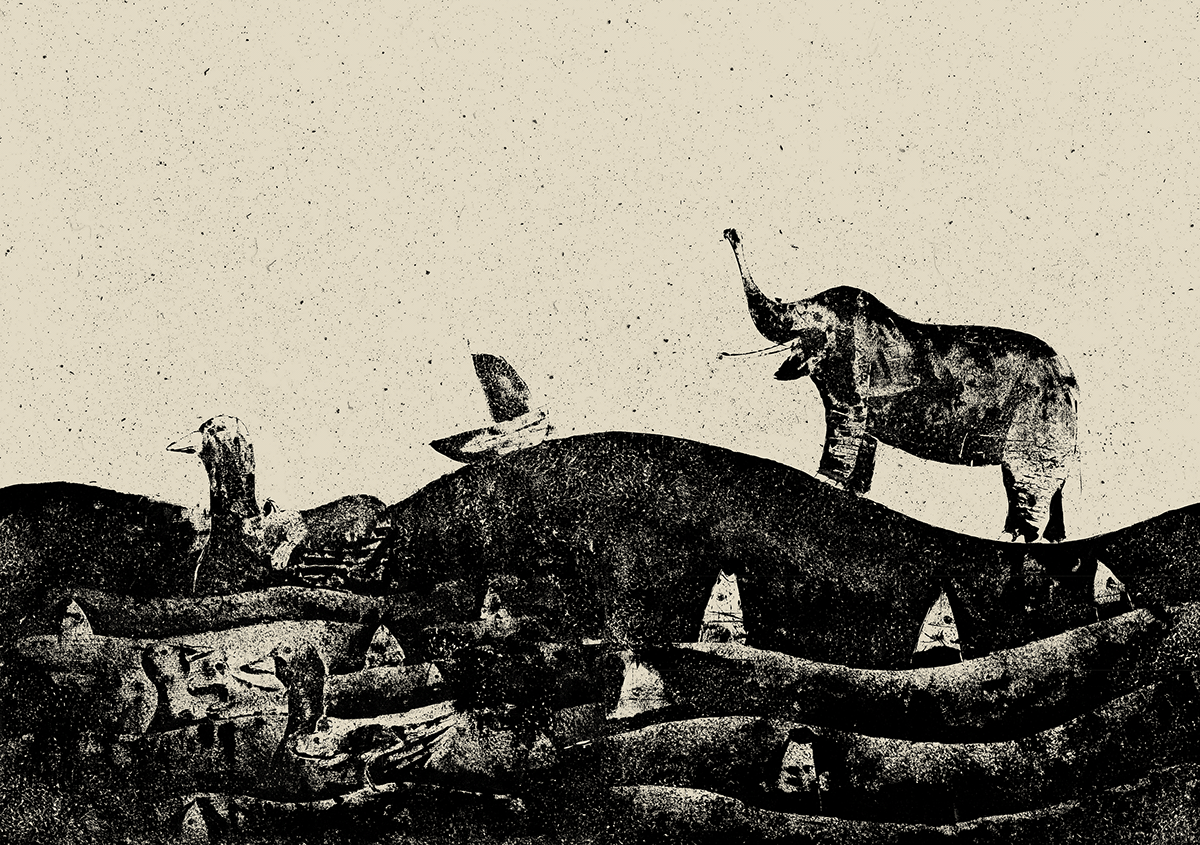Preaching To the Fish
Acrylic paint on paper

St. Anthony of Padua, a Franciscan friar from the 13th century, is said to have spoken to fish. When Anthony arrived to Rimini, Italy, as part of his ministry, the city's unfriendly officials ordered that everyone in the city ignore him. After several failed attempts to pique people's interest, Anthony found himself by the side of a local river and began preaching to fish instead of people. As the legend goes, a large school of fish gathered around him and began poking their heads out of the water to listen. Embarrassed, the people of Rimini approached Anthony and joined the fish in appreciating the saint's uplifting sermon.
Because the majority of my recent works lack human protagonists, the elephant in this piece takes on the role of a preacher. I am fascinated with how animals are depicted in art, literature, and cultural texts in general. Animal tales are crucial to my project because they are created by humans in their attempts to comprehend what it means to be human through observation and meditation on the animal realm.








Here are some Medieval and Renaissance depictions of fish
listening intently to what Saint Anthony has to say:




Saint Anthony Preaching to the Fish. Left to right:
1. Mural Fresco in the cathedral of St. Anthony, Padua. © Chris Protopapas.
2. Woodcut, 1480. Museo Correr, Venice.
3. Paolo Veronese, 1580–1585. Oil on canvas. Galleria Borghese, Rome.
4. Francisco de Herrera the Elder (attributed to), c. 1630. Institute of Arts, Detroit.
There is also a large body of art featuring humanised animals or animals taking on human roles, for example:


1. Reynard the Fox wearing a mitre preaching to the geese and other birds, France c. 1300-c 1340.
2. Coronation of Emperor Haile Selassie I, 1930; depicted as the Last Supper using the symbology of the Animal Kingdom. 1930. British Museum, London.
